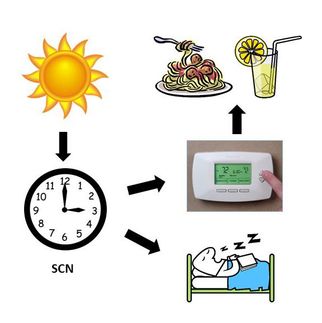New discovery paves the way for medicine for people with hearing disabilities
Researchers at Karolinska Institutet in Sweden have identified a biological circadian clock in the hearing organ, the cochlea. This circadian clock controls how well hearing damage may heal and opens up a new way of treating people with hearing disabilities.
Important body functions, such as sleep, the immune system, and hormone levels are controlled by a biological circadian clock. A team of researchers at Karolinska Institutet have now discovered that there is also a biological clock in the ear, controlled by genes known to regulate circadian rhythms. One of these genes was found to cycle in the cochlea from mice over several days in a pattern that followed the hours of the day. By measuring the activity of the auditory nerve, the researchers found that mice exposed to moderate noise levels during the night suffered from permanent hearing damages while mice exposed to similar noise levels during the day did not. The ability to heal after hearing damage was therefore linked to the time of day during which the noise damage occured, and here the ear's circadian clock played an important role.
It is known that the production of the growth hormone, BDNF, Brain-derived neurotrophic factor, known to protect auditory nerve cells, fluctuates throughout the day. When mice were exposed to noise during daytime, their concentration of BDNF in the ear increased, which protected them from permanent hearing damage. This protective response was absent at night time. However, researchers succeeded in tricking the mice's ear clocks in an experiment where they exposed mice to noise at night while stimulating BDNF at the same time. Mice were then protected from permanent hearing loss as their auditory nerve cells successfully recovered from noise injury.
These exciting new findings about the ear's clock, which is published in the prestigious journal Current Biology, may explain why we have different levels of noise sensitivity during different times of the day. The findings pave the way for new treatment methods for hearing damage, which affects between 10 and 15 per cent of the population. The results are for example important for shift workers in noisy environments, flight crews that travel quickly across time zones and people visiting concerts and discos with high noise levels.
“This fundamental discovery opens up an entirely new field of research and reveals some of the mysteries behind the unfamiliar auditory functions,” says Barbara Canlon, professor of auditory physiology at the Department of Physiology and Pharmacology at Karolinska Institutet.
Organizations
Other news from the department science

Get the life science industry in your inbox
From now on, don't miss a thing: Our newsletter for biotechnology, pharma and life sciences brings you up to date every Tuesday and Thursday. The latest industry news, product highlights and innovations - compact and easy to understand in your inbox. Researched by us so you don't have to.




















































